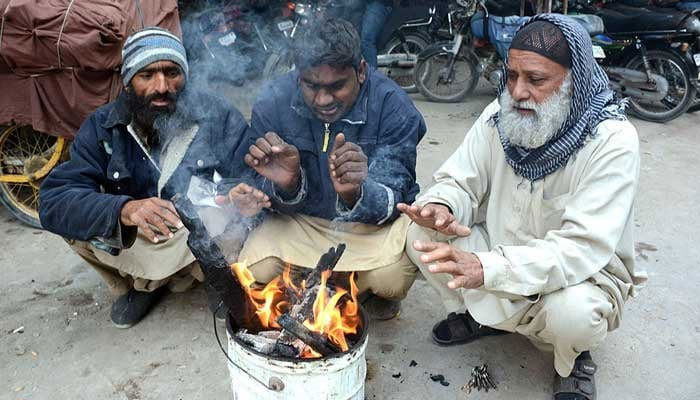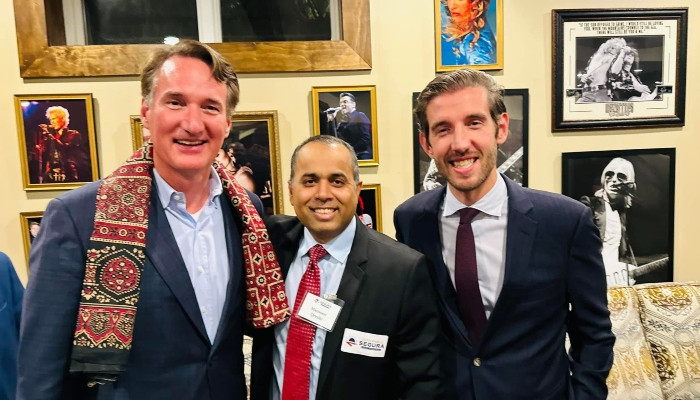Travel
Children’s population in Pakistan may touch 129 million by 2050: Unicef
字号+ Author:Smart News Source:Health 2025-01-13 06:09:40 I want to comment(0)
ISLAMABAD: The population of children in Pakistan is estimated to be 129 million by 2050, whereas India and China will have an average of 350m and 141m respectively, according to the ‘State of the World’s Children 2024, released by Unicef on Wednesday. In Nigeria, the children’s population will be 132m, says the report released coinciding the observance of World Children’s Day. The future of childhood hangs in the balance if urgent action is not taken to safeguard children’s rights in a changing world, the United Nations Children’s Fund (Unicef) warned in its flagship report. The report projects how three major global forces — or megatrends — will impact children’s lives by 2050 and beyond. The megatrends — demographic change, climate and environmental , and breakthrough technologies — provide key indications of the challenges and opportunities children may face in the future. “Children are experiencing a myriad of crises, from climate shocks to online dangers, and these are set to intensify in the years to come,” said Unicef Executive Director Catherine Russell. The climate crisis is already dire, with 2023 being the hottest year on record. According to the report, in the decade of 2050-2059, climate and environmental crises are expected to become even more widespread, with eight times as many children exposed to extreme heat waves, three times as many exposed to extreme river floods, and nearly twice as many exposed to extreme wildfires, compared to the 2000s. How these climate hazards impact children will be determined by their age, health, socioeconomic setting, and access to resources. For example, a child with access to climate-resilient shelter, cooling infrastructure, health care, education, and clean water has a greater chance of surviving climatic shocks compared to a child without access. The report underscores the urgent need for targeted environmental action to protect all children and mitigate the risks they face. Young children born here today are only going to achieve about 47 per cent of their development potential, according to the World Bank. A lot more needs to be done. Meanwhile, the report acknowledges that frontier technologies — like Artificial Intelligence (AI) — offer both promise and peril for children, who are already interacting with AI embedded in Apps, toys, virtual assistants, games, and learning software. But the digital divide remains stark. The report contains some good news. Gains in children’s access to education over the last 100 years are also projected to continue, with nearly 96 per cent of children globally expected to have at least a primary education in the 2050s, up from 80 per cent in the 2000s. Likewise, with increased investment in education and public health, and more stringent environmental protection, the report states that outcomes for children could improve significantly. The report underscores the importance of centring child rights, as outlined in the United Nations Convention on the Rights of the Child, in all strategies, policies and actions. It calls for meeting the challenges and opportunities posed by the three megatrends by: investing in education, services, and sustainable and resilient cities for children; expanding climate resilience in infrastructure, technology, essential services and social support systems; and delivering connectivity and safe technology design for all children. Universal Children’s Day 2024 was commemorated in the capital under the theme ‘For Every Child, Every Right’. The event was held in a collaborative effort led by the Child Rights Movement (CRM) Pakistan with support from AwazCDS-Pakistan, United Global Organisation of Development (UGOOD), Islamic Relief (IR), and the Youth Development Association (YDA). Similarly, Society for the Protection of the Rights of the Child (Sparc) held an event during a gathering of area stakeholders in its open schooling and vocational skills centre at Pirwadhai in Rawalpindi. Speaking on the occasion, Sparc Executive Director Asiya Arif expressed concern over the ever-increasing number of street children and young vendors in the twin cities. It was shared that the Rawalpindi centre provided open schooling to children of multiple ethnicities between 6-17 years of age with 60pc of Afghan origin and 20pc children belonging to different areas of Khyber Pakhtunkhwa including Mohmand Agency, Bajaur Agency, Peshawar, Charsadda and Mardan. Another 20pc children belong to slums of catchment area in Pirwadhai and are local settlers. Programme Manager Sabeen Almas shared that the centre provided basic literacy to children who were either school dropouts or had to a school. “The mode of teaching is open in terms of timing, location and instructional methods. A centre working on similar pattern is operational in Golra Sharif, Islamabad where girls are the primary beneficiaries,” she added.
1.This site adheres to industry standards, and any reposted articles will clearly indicate the author and source;
 Related Articles
Related Articles-
Netanyahu compares ‘anti-Semitic’ ICC arrest warrants to ‘new Dreyfus trial’
2025-01-13 05:56
-
Small plane crashes into Brazilian city, killing all 10 people on board
2025-01-13 05:51
-
Black boxes of downed Azerbaijani jet recovered as questions mount over Russian involvement. Here’s what we know
2025-01-13 05:19
-
How Kremlin disinformation could hide the cause of the Azerbaijan Airlines crash
2025-01-13 03:42
 User Reviews
User Reviews Recommended Reads
Recommended Reads Hot Information
Hot Information- G20 summit kicks off with global pact to fight hunger, poverty
- Thousands of liters of chemicals dumped into Brazilian river during deadly bridge collapse
- Black boxes of downed Azerbaijani jet recovered as questions mount over Russian involvement. Here’s what we know
- Thousands of liters of chemicals dumped into Brazilian river during deadly bridge collapse
- ANP jirga to visit Kurram for easing tensions, says Aimal
- Thousands of liters of chemicals dumped into Brazilian river during deadly bridge collapse
- Small plane crashes into Brazilian city, killing all 10 people on board
- ‘Ordinary people with shovels’: Volunteers cleaning Black Sea oil spill ask Putin for help
- Anti-Encroachment Tribunal orders removal of decades-old school building
 Abont US
Abont US
Follow our WhatasApp account to stay updated with the latest exciting content













